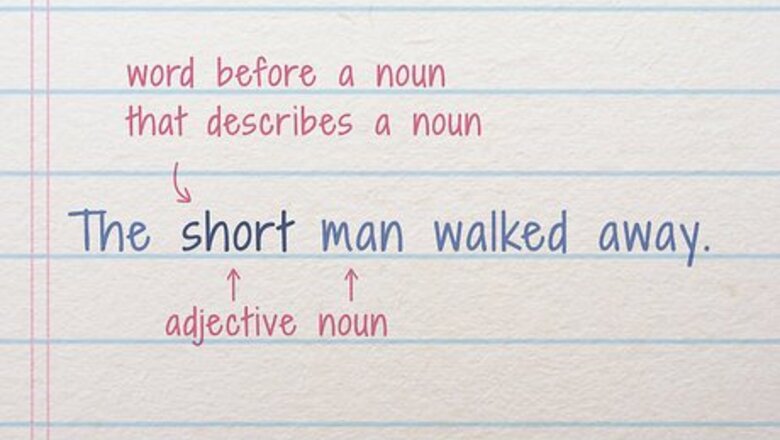
views
Identifying an Adjective Based on Position
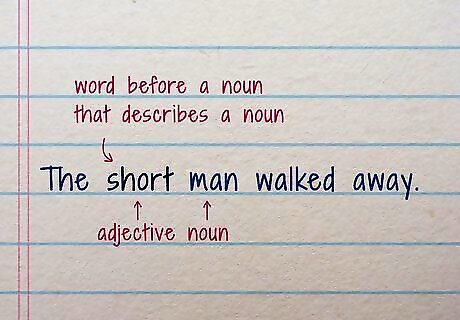
Look for a word before a noun that describes the noun. This is the most typical way to use an adjective. When reading a sentence, find the noun first. The nouns is the person, place or thing that is the subject of the sentence. Then, check to see if there is a descriptive word right before the noun. If there is, then it may be an adjective. For example, in a sentence that reads, “The short man walked away,” the noun is the “man” and the word describing “man” is “short.” Therefore, “short” is the adjective. Or, if the sentence reads, “The pristine beach was nearly empty,” the noun is the “beach” and the adjective is “pristine.”Tip: Keep in mind that there can be more than one adjective in a sentence. For example, a sentence that reads, “The shy, brunette girl smiled,” “shy” and “brunette” are adjectives.
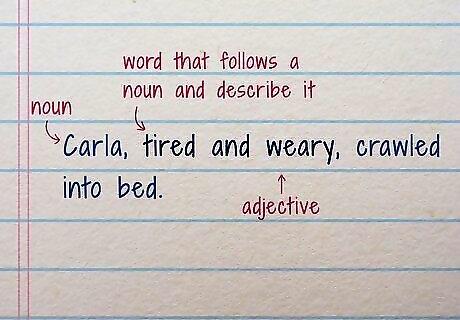
Check for words that follow a noun and describe it. Multiple adjectives may also follow a noun depending on how the sentence is structured. When adjectives come after a noun in a sentence, there will usually be a comma separating the noun and adjectives. For example, in a sentence that reads, “The cotton candy, pink and fluffy, called my name,” “pink” and “fluffy” are both adjectives being used to describe the noun “cotton candy.” In the sentence, “Carla, tired and weary, crawled into bed,” the noun is “Carla” and the adjectives are “tired” and “weary.”
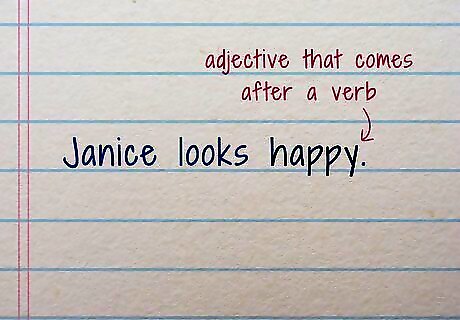
Check for adjectives that come after verbs. Another common way of placing an adjective in a sentence is after a “verb of being” or “linking verb.” These verbs include “is,” “will,” “has been,” “was,” and “are.” Linking verbs connect a noun to a descriptive adjective, such as “tastes,” “feels,” “smells,” and “looks.” For example, in a sentence that reads, “The car is red,” the verb is “is,” and the adjective is “red.” In a sentence that reads, “Janice looks happy,” the verb is “looks” and the adjective is “happy.”
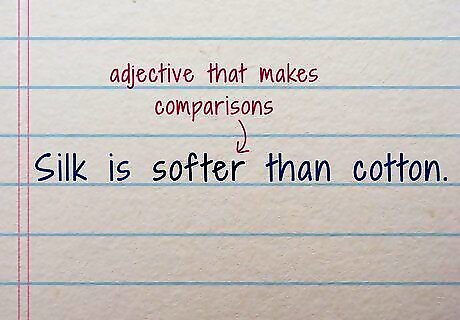
Watch for adjectives within sentences that make comparisons. This is another easy way to spot an adjective within a sentence. Just look for a descriptive word within a sentence that compares 2 nouns. The word “than” will usually also be present in this type of sentence. For example, in a sentence that reads, “The desert is prettier than the mountains,” the word “prettier” is the adjective. Or, in a sentence that reads, “Silk is softer than cotton,” the word “softer” is the adjective.
Using Suffixes to Spot Adjectives
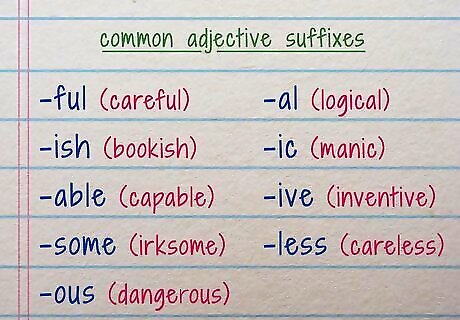
Watch for common adjective suffixes. Adjectives often end in suffixes, so learning common suffixes may help you to identify an adjective when it’s not included in a sentence or phrase. Some common adjective suffixes include: -ful -ish -able -some -ous -al -ic ive -less
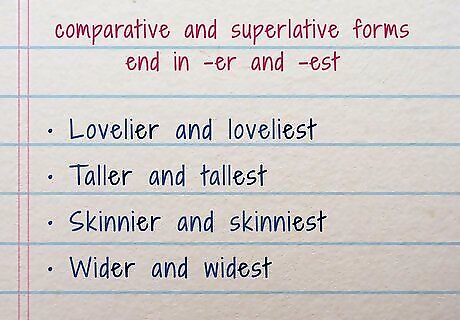
Check for comparative and superlative forms that end in -er and -est. These are adjectives that take an adjective through different degrees, as in short, shorter, and shortest or smart, smarter, and smartest. Some other examples of comparatives and superlatives include: Lovelier and loveliest Taller and tallest Skinnier and skinniest Wider and widestTip: To remember this, think of adjectives as words on a scale, which means that they go from the least to greatest version of the word.
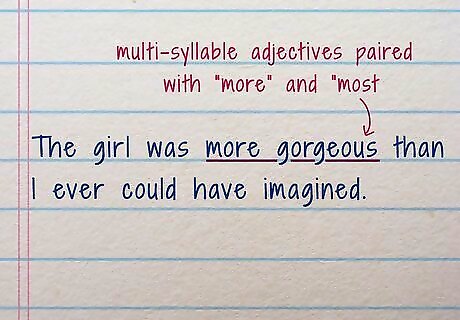
Watch for multi-syllable adjectives paired with “more” and “most.” If the adjective has more than 2 syllables, you may see it paired with words like “more” and “most.” These words indicate that the adjective is a superlative. For example, the word “gorgeous” is an adjective, but it has more than 2 syllables. Therefore, it cannot end with –est or –er. Instead, you might say, “The girl was more gorgeous than I ever could have imagined.” Likewise, the word “majestic has more than 2 syllables, so it cannot end in –est or –er. Instead, you might say, “The white horse was the most majestic of all.”
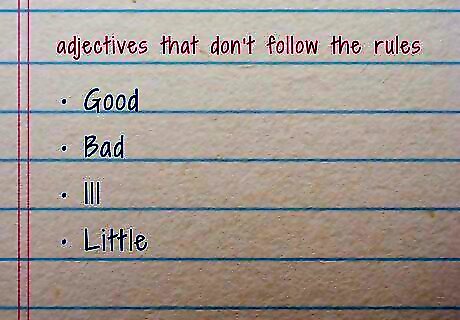
Be aware that some adjectives that don’t follow the rules. These adjectives don’t work with suffixes or the words “more” and “most,” so they can be a little harder to identify as adjectives. However, if you memorize these 4 words, you’ll know that they are adjectives and you can easily spot them if they show up on a test. Good Bad Ill Little


















Comments
0 comment